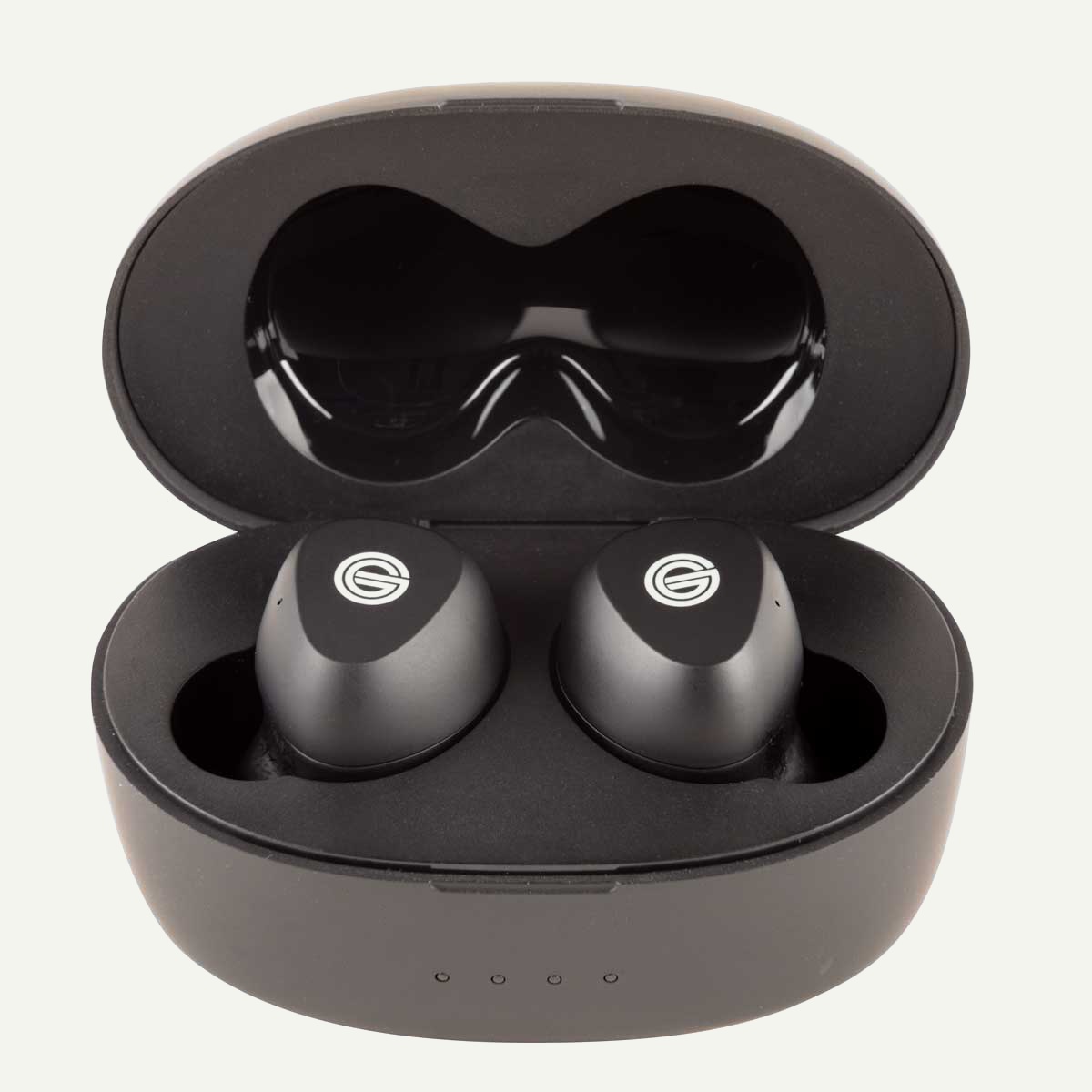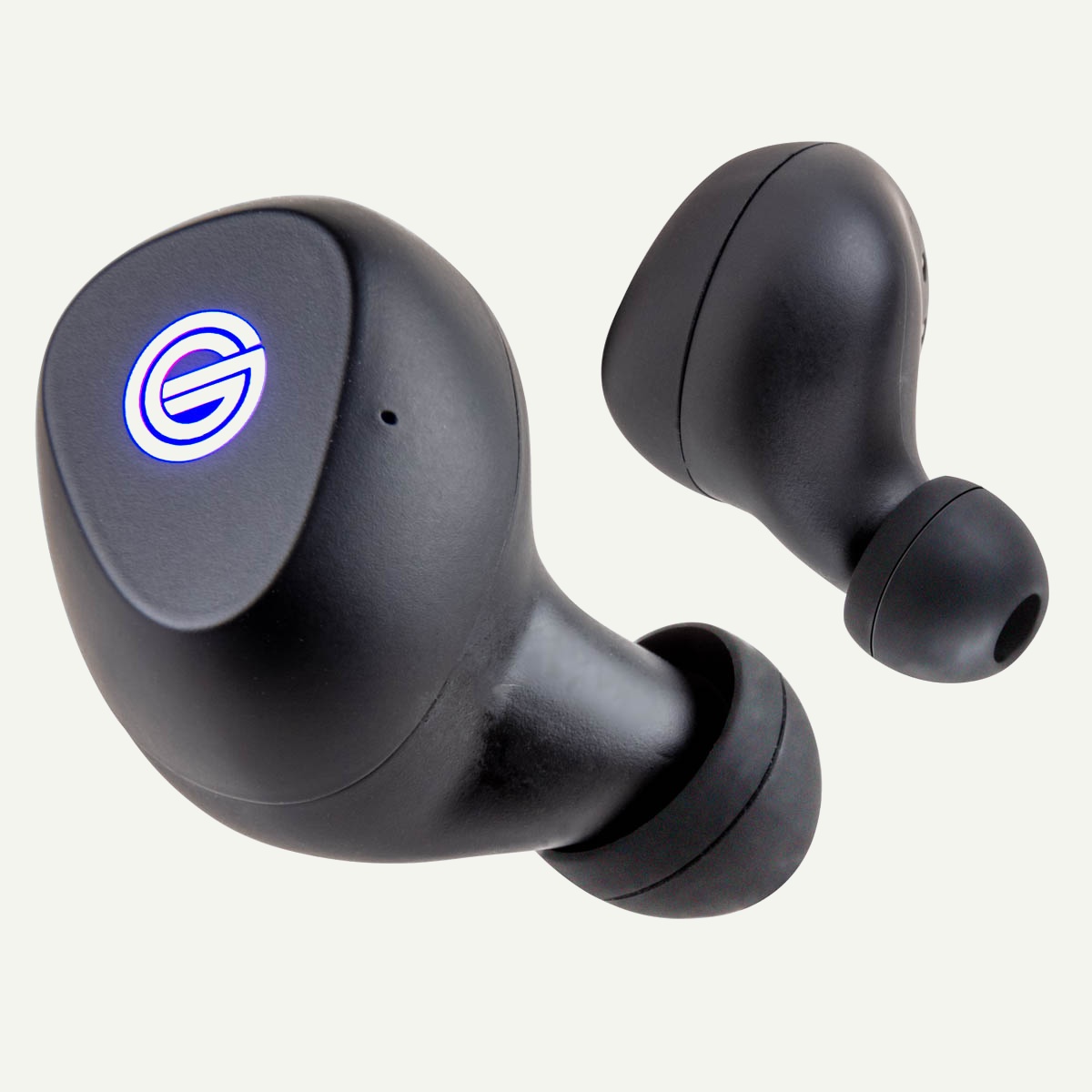New Gear Review: GT220 True Wireless Headphones by Grado Labs

Grado Labs presents the GT220 True Wireless In-Ears—can these become your listening solution for both business and pleasure?
Any musician who has used an in-ear rig knows the value of having the right set of monitors. Everyone’s needs are unique, and there are tons of factors at play when considering your ideal setup. Do you prefer molds or generic fit? Do you want to hear any natural ambience? What material feels and sounds the best for you?
If you’re in the market for a high quality set of in-ears, you’re already considering the above—and typically, added Bluetooth functionality isn’t included there. In comes Brooklyn’s Grado Labs with the GT220 True Wireless Headphones.
Now, considering the amount of time most of us rack up using our devices, you might wonder, why not up your smartphone earbud game then, too? So with the GT220s, can Grado Labs blur the line between pro music applications and everyday listening?
Features and Use
Grado purports that the GT220s have a battery life of 6 hours, with the charging case able to dole out another five full charges—thus coming in at a total of 36 hours. The user manual does note that this number can vary depending on listening volume and genre of music being played. The case itself takes two hours to fully charge. The monitors boast a frequency response of 20Hz – 20kHz and have a nominal impedance of 32ohms. Supported codecs include aptX and AAC.
The GT220s are touch sensitive; simply tap on the “G” icon to initiate commands. The left ear offers control over voice commands and phone functions while the right ear offers control over music. With these two touch points, commands for voice assistant, volume, play/pause, next/previous track, and volume are all at the ready.
The first thing to note when handling the GT220s is that they are more like proper in-ears than they are a set of normal store-bought earbuds. This goes for both the sound fidelity and their physical design. They are, however, packaged and purpose-built to be just as convenient for you to use anywhere as a set of AirPods—they’re just a little bigger. With the AirPods mobile charger measuring in at 3/4 x 1-3/4 x 2, the GT220s measure 1-1/2 x 1-5/8 x 2-3/4.
The GT220s, like the AirPods, ship in the same type of sleek and minimal packaging we’ve come to know from Apple, giving a feeling of quality even before fully unboxing. The GT220 mobile charger is also somewhat egg-like in shape with comfy rounded edges, only the Grado charger has a nice matte black finish. The GT220s ship with a USB-C cable, as well as two alternate sets of detachable silicone tips, sure to fit any size ear canal.
I found the GT220s to be an incredibly easy and comfortable fit; simply thumb them lightly into your ear canal and twist slightly backwards in order to “lock” them in place. The user manual however does note,“If placing the GT220 in your ear without twisting feels best then you’re already done.
Alright, so they’re in my ears. I couldn’t wait to visit some of the most familiar mixes I know.
And WOW. First thought: I would mix in these. Yes, I would mix in a set of in-ears… if it were this set of in-ears. As a matter of fact, I think in the last 10 or so years, it has become incredibly valuable to (at least) check your mixes through a set of earbuds. Like it or not, audiophiles, it’s the way a massive percentage of people on earth consume music.
But I digress.
I have had the pleasure of mixing with Grado on-ear cans in the studio on several occasions, and they’ve always blown me away. It has just always felt like such a 20/20 listening experience, with nothing either highlighted or veiled—just simply what is. To be honest, I don’t have a good excuse why I haven’t gone out of my way to purchase a set of Grados for myself.
With the GT220s, I made it a point to listen to material that I particularly have heard mostly or only through my AirPods. Yes, it is a given for a boutique company like Grado to have a leg up fidelity-wise on a set of AirPods which are available to the masses, but this was something else. I was hearing things I’ve never heard, on records I’ve listened to dozens and dozens of times. Lyrics that have been obscured for years all of a sudden were perfectly decipherable. Lead guitar melodies and backup vocals became exposed with incredible detail.
These did not feel like a set of Bluetooth earbuds that I just pulled out of a mobile USB charger.
The lower end of the frequency on the GT220s felt fully present, yet completely controlled and not embellished whatsoever—again, just what is. I had no issues hearing separation between kick drums and bass guitars on mixes that I know are perfect in this regard. The midrange and up felt crystal clear—no color, no hype, and fantastic distinction between instruments that historically battle for space in mixes. I was hearing frets buzz and finger noise on guitars that I never knew existed, on songs I’ve heard countless times on lesser rigs.
Dynamically, it felt as though the GT220s had headroom for days. No big impacts were obscured or skewed by hyped frequency responses. I have honestly never had an experience with in-ears that felt quite as similar to using a proper set of studio reference cans as this.
I own an expensive set of silicone molded in-ears made by Sensaphonics that have seen shockingly little use over the last decade-plus. They are extremely isolated (I have since come to learn that I do prefer some ambience), and also just don’t quite sound very pleasing to my ears. It’s not a question of whether the Sensaphonics are high quality in-ears; on stage, they cut like a knife, however perhaps they are just not a great match for me. As a mixer, I am used to the sound of reference headphones, and although the Sensaphonics do have me covered on stage, I do not find myself using them for everyday listening.
The GT220s however, will now come with me wherever I go.
To Be Critical
In all fairness, I cannot yet vouch for the GT220s with regard to use on stage. We are in a pandemic, and I have not played live music in a room with other musicians in far too long. But I do know I am partial to generic fits, surprisingly. I am curious to see how the GT220s would fare here—will they be loud enough? I am a drummer, and often need a pretty loud in-ear feed to cut through the high sound pressure levels on stage. And because I’ll be needing the GT220s to function on the louder side, will the battery life suffice?
The only other thing I’ll mention is that when using them in a dark room, the flashing blue light can perhaps be bothersome to a roommate. I am a traveling musician, and oftentimes find myself in shared hotel rooms. I wouldn’t want the blue flashing light to keep my roommate up after a long day of work/travel.
Summing it Up
I can’t help but directly compare the Grado GT220s to the AirPods, just in the sense that people are already paying $159 for the standard AirPods and $249 for the AirPods Pro (which granted I have not demoed). But the GT220s are priced at $259. That is a ten dollar difference from the AirPod Pro.
Coming from a person who has been listening to music critically for 20+ years, it seems like an absolute no-brainer that if you were to even consider paying ~$150-$250 for an Apple earbud solution, to go the extra mile here for the Grados. I want to shout it from the rooftops. These are serious buds with crystal clear sound reproduction. Studio grade. If you would like to check out the GT220s for yourself, head over to Grado’s official web store—you won’t be disappointed.
Please note: When you buy products through links on this page, we may earn an affiliate commission.








[…] Any musician who has used an in-ear rig knows the value of having the right set of monitors. Everyone’s needs are unique, and there are tons of factors at play when considering your ideal setup. Do you prefer molds or generic fit? Do you want to hear any natural ambience? Read more… […]